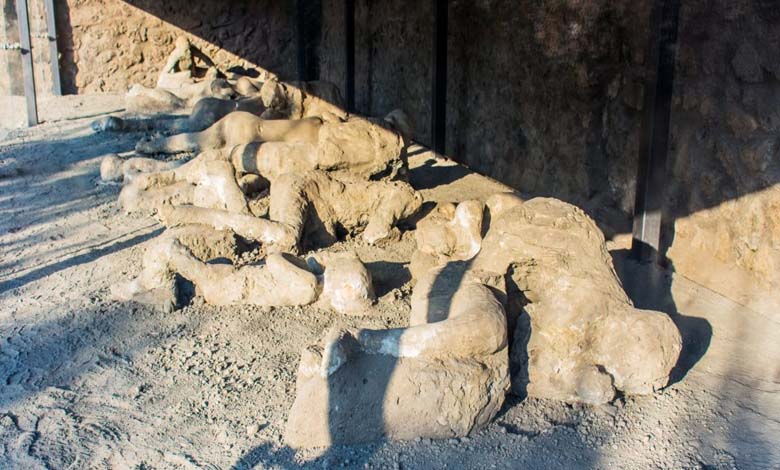Revealing Fascinating Facts About the City of Fire and Hell, Pompeii

New research published on Thursday indicates that some of the victims who perished in Roman Pompeii after the devastating eruption of Mount Vesuvius in AD 79 may have died due to an earthquake that occurred simultaneously.
According to Agence France-Presse, researchers have been studying for decades whether seismic activity occurred during the eruption of Mount Vesuvius about two thousand years ago, and not just shortly before, as mentioned by the Roman magistrate Pliny the Younger in his letters.
The study, published Thursday in the academic journal Frontiers in Earth Science specializing in geochemistry and seismology, provides new data on the famous archaeological site, suggesting that “one or more earthquakes occurring simultaneously with the eruption caused building collapses and the death of residents” in Pompeii.
The study’s authors indicated that their findings “show that the effects of building collapses caused by concurrent earthquakes (seismic activity during the eruption) should be considered an additional cause of deaths in ancient Pompeii.”
They noted “no evidence has yet been reported” of the damage caused by the earthquake that occurred at the time of the eruption, despite abundant literature on the damage caused by earthquakes before Vesuvius began spewing lava.
Archaeologists estimate that between 15 and 20% of Pompeii’s population perished during the eruption, primarily due to thermal shock from the massive cloud of gas and ash that covered the city.
Pompeii was subsequently buried under volcanic ash, leading to the complete preservation of the Roman city’s houses, public buildings, objects, and even residents until its discovery in the late 16th century.
-
Egypt Announces New Archaeological Discovery in Aswan
-
Awakening of a Black Hole: Millions of Times Larger than the Sun
In May 2023, archaeologists discovered the skeletons of two men who appear to have died not from the heat and gas clouds, but from the shock caused by collapsing walls.
One of the men’s left hand was found raised to protect his head.
The study’s authors noted that “these shocks resemble those experienced by people in modern earthquakes.” They concluded that the walls did not collapse due to falling rocks and debris, but due to seismic activity.












